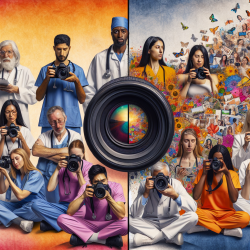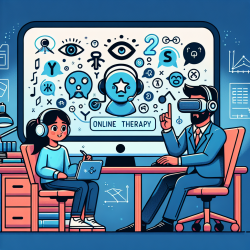Introduction
Burnout is a prevalent issue in the healthcare sector, affecting professionals across various disciplines. Defined by the Mayo Clinic as a state of physical or emotional exhaustion that involves a sense of reduced accomplishment and loss of personal identity, burnout can have significant implications for both individuals and organizations. The COVID-19 pandemic has exacerbated these challenges, making it crucial to find effective strategies to address and prevent burnout.
The Power of Photovoice
A recent study titled Using Concepts of Photovoice to Engage in Discussions Related to Burnout and Wellbeing explores innovative ways to tackle burnout. Photovoice is a participatory method that uses photography to capture and discuss community issues. In this study, community health workers were asked to present photographs that depict sources of burnout and factors promoting wellbeing. These photographs, accompanied by quotes, were displayed in a gallery-style exhibit for students to engage with, fostering discussions and deeper understanding.
Key Findings
The study identified four major factors contributing to burnout:
- Workload Demands: High caseloads and administrative pressures are major contributors.
- Unrealistic Expectations: From both self and others, these expectations can lead to stress.
- Time Dedicated to Care: The need to be constantly available can be overwhelming.
- Lack of Work-Life Balance: Difficulty in unplugging from work exacerbates burnout.
Conversely, the study also highlighted factors that promote wellbeing:
- Connecting with Peers: Building a support network with colleagues helps mitigate stress.
- Physical Activity: Regular exercise is a powerful tool for mental health.
- Self-Care Practices: Engaging in hobbies and relaxation techniques is crucial.
- Mentorship: Having a mentor provides guidance and support.
Implications for Practitioners
For practitioners, these findings underscore the importance of self-care and community engagement. By adopting strategies such as regular exercise, building peer support networks, and seeking mentorship, healthcare professionals can better manage stress and prevent burnout. The study also emphasizes the value of connecting students with practicing professionals, enhancing their understanding of the demands and resources in their future careers.
Encouraging Further Research
While this study provides valuable insights, it also highlights the need for further research. Exploring diverse populations and settings can help generalize these findings and develop comprehensive strategies to combat burnout. Practitioners are encouraged to engage with ongoing research and consider implementing photovoice or similar participatory methods in their practice.
To read the original research paper, please follow this link: Using Concepts of Photovoice to Engage in Discussions Related to Burnout and Wellbeing.










